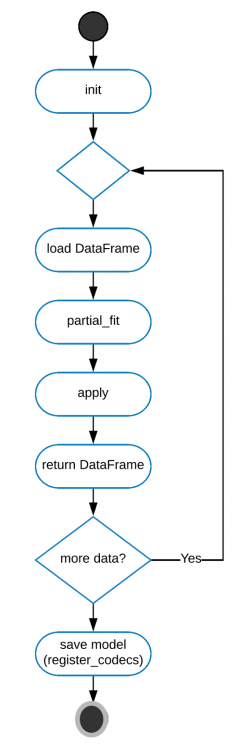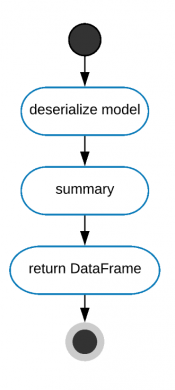Running process and method calling conventions
The Splunk platform applies logic when running process and method calling conventions. For MLTK and ML-SPL users, the following commands can be of particular interest:
- Running the fit command when partial_fit is False
- Running the fit command when partial_fit is True
- Running the apply command
- Running the summary commands
Running the fit command when partial_fit is False
When running the fit command and the partial_fit parameter is False, the fit method of the chosen algorithm is called first. If that method returns a DataFrame the process returns to the search. If that method does not return a DataFrame, the apply command is called to return a DataFrame.
The default for the partial_fit parameter is False (partial_fit=f).
Running the fit command when partial_fit is True
When running the fit command and the partial_fit parameter is True, the partial_fit method of the chosen algorithm is called first on each chunk of 50,000 events. The apply command is then called on those events. This process continues until you run out of events.
Running the apply command
When running the apply command, the Python object is reconstructed using its codec. Then the apply command is called on the events, chunk by chunk.
Running the summary command
Similar to running the apply command, when running the summary command, the Python object is reconstructed using its codec. Once done, the summary command is called.
| Custom algorithm template | Using codecs |
This documentation applies to the following versions of Splunk® Machine Learning Toolkit: 5.1.0, 5.2.0, 5.2.1, 5.2.2, 5.3.0, 5.3.1, 5.3.3, 5.4.0, 5.4.1, 5.4.2, 5.5.0, 5.6.0




 Download manual
Download manual
Feedback submitted, thanks!